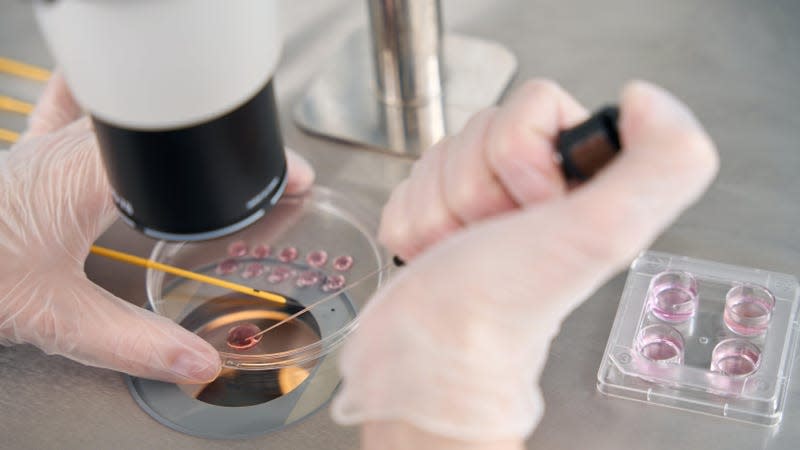Scientists Say They've Now Grown a Whole Human Embryo Model From Scratch

A team of scientists in Israel say they’ve accomplished an incredible feat of biology: The creation of a completely human-like embryo model without the need for a sperm or egg. The synthetic embryos were grown using stem cells instead and appeared to have the same structures and components of a typical human embryo up through 14 days of development. The team believes their work will help us better understand the earliest stages of pregnancy and could even one day pave the way for breakthroughs in organ transplantation and other fields of medicine.
The research was led by scientists from the Weizmann Institute of Science. The group is one of several teams around the world that’s working on growing more complex synthetic embryos. Last summer, they published a study showing their creation of mice embryos derived entirely from mouse stem cells—mere weeks before another team from the UK published findings on their own mice model. Now, they seem to have done the same with human stem cells.
Read more
Bethesda Explains Starfield's Complete Lack Of Ground Vehicles
Jimmy Fallon is the latest television host to face toxic workplace allegations
Grimes Demands Elon Musk Let Her See Their Son in Now-Deleted Tweet
Danny Masterson Sentenced to 30 Years for Rapes, Won’t See Parole Until He’s 77
The team’s findings were published Wednesday in Nature.
Scientists today can develop already created embryos in the lab to a certain extent, as well as produce artificial but simplistic models of embryos or individual organs. But these models still don’t allow us to closely look at the earliest stages of human development. And the authors say their work can do just that.
“The drama is in the first month, the remaining eight months of pregnancy are mainly lots of growth,” said study author and research leader Jacob Hanna in a statement from the Weizmann Institute. “But that first month is still largely a black box. Our stem cell-derived human embryo model offers an ethical and accessible way of peering into this box. It closely mimics the development of a real human embryo, particularly the emergence of its exquisitely fine architecture.”
One of the initial hopes of this research is that we can learn more about why miscarriages occur, which most commonly happen in the first trimester. These models could also make it easier for scientists to study how drugs or other exposures can potentially affect a fetus. Eventually, these advances might even enable us to create fully working organs in the lab that can be used for transplantation.
More from Gizmodo
Russell Wilson and his diva ways weren't ready for a coach like Sean Payton
Formula 1 Owners Are Stuck Marketing A Sport After They Sold Us Entertainment
What Two Soviet Tourists Thought Of America While On A 10,000-Mile Road Trip In 1936
Sign up for Gizmodo's Newsletter. For the latest news, Facebook, Twitter and Instagram.

